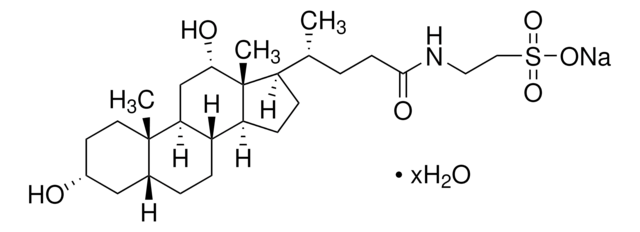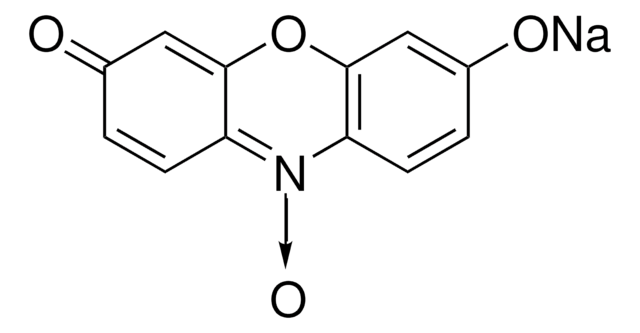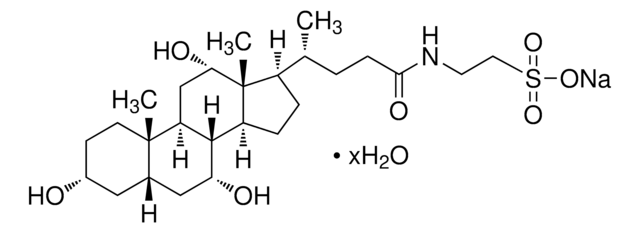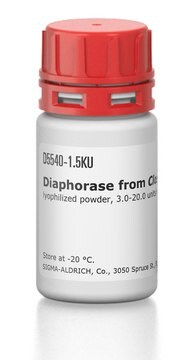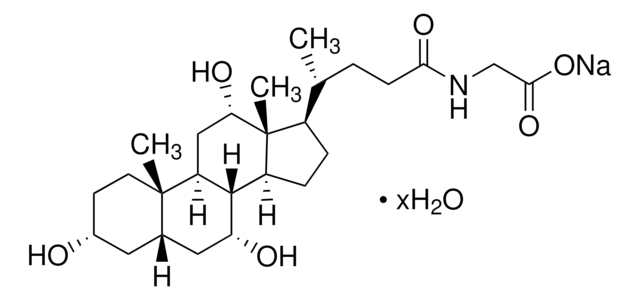Wichtige Dokumente
H1506
3α-Hydroxysteroid-Dehydrogenase Zubereitung aus Pseudomonas testosteroni
≥15 units/mg protein
Synonym(e):
3α-Hydroxysteroid:NAD(P)+ oxidoreductase
About This Item
Empfohlene Produkte
Biologische Quelle
bacterial (Pseudomonas testosteroni)
Form
lyophilized solid
Spezifische Aktivität
≥15 units/mg protein
Aufgereinigt durch
chromatography
Zusammensetzung
Protein, ≥25%
Fremdaktivität
β-hydroxysteroid dehydrogenase ≤0.5%
alcohol dehydrogenase ≤0.05%
Lagertemp.
−20°C
Suchen Sie nach ähnlichen Produkten? Aufrufen Leitfaden zum Produktvergleich
Anwendung
- in the preparation of composite electrode platform to for the determination of androsterone
- in potassium phosphate buffer for the bioluminescent assay of bile acids in serum
- for total bile salts assay using an enzymatic method
Biochem./physiol. Wirkung
Einheitendefinition
Physikalische Form
Lagerklassenschlüssel
11 - Combustible Solids
WGK
WGK 3
Flammpunkt (°F)
Not applicable
Flammpunkt (°C)
Not applicable
Persönliche Schutzausrüstung
Eyeshields, Gloves, type N95 (US)
Hier finden Sie alle aktuellen Versionen:
Besitzen Sie dieses Produkt bereits?
In der Dokumentenbibliothek finden Sie die Dokumentation zu den Produkten, die Sie kürzlich erworben haben.
Kunden haben sich ebenfalls angesehen
Protokolle
Enzymatic Assay of 3α-Hydroxysteroid Dehydrogenase with Androsterone (EC 1.1.1.50)
Unser Team von Wissenschaftlern verfügt über Erfahrung in allen Forschungsbereichen einschließlich Life Science, Materialwissenschaften, chemischer Synthese, Chromatographie, Analytik und vielen mehr..
Setzen Sie sich mit dem technischen Dienst in Verbindung.